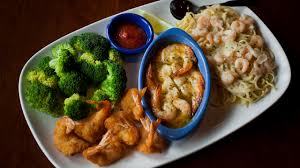Attention all seafood lovers! Brace yourselves because we have some shrimply fascinating news for you. Red Lobster's legendary endless shrimp deal has been making waves in the culinary world, but little did they expect it to create a tidal wave of popularity among food enthusiasts across the nation. Prepare to be hooked as we dive deeper into why this delectable offering became so overwhelmingly popular that even Red Lobster themselves were taken aback. From succulent shrimp dishes to insatiable appetites, join us on this mouthwatering journey as we unravel the secrets behind Red Lobster's irresistible and highly sought-after endless shrimp deal.
Enabling loopback connections in WordPress means making sure your server can make HTTP requests to itself (e.g., calling https://yoursite.com/wp-cron.php from within itself). Loopback is required for: WP-Cron jobs Plugin/theme editors (to verify file write permissions) Some site health checks ( Tools > Site Health ) Automatic updates ✅ What Is a Loopback Request? A loopback is when your WordPress site tries to request a URL from itself using tools like wp_remote_get() or fsockopen() . For example: $response = wp_remote_get ( home_url ( '/wp-cron.php' ) ); If this fails, you might see warnings in Tools > Site Health like: “Your site could not complete a loopback request.” 🛠 How to Enable Loopback Requests Here are the key steps depending on your hosting/server setup: ✅ 1. Make Sure localhost or Domain Resolves Internally Check your server can resolve requests to itself. Use this quick PHP script: Create a file test-loopback.php i...

Comments
Post a Comment